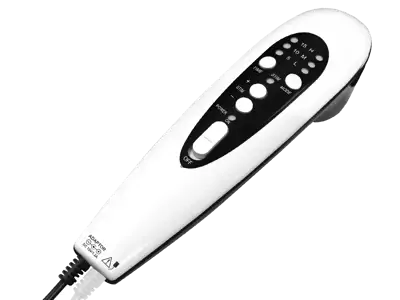Spurs
A bone spur is the popular name for the bone build-up on the heel bone. They form where tendons and ligaments attach to the heel bone.
Read more...Bone overgrowth (bone growth) on the heel bone is colloquially known as "spur". A spur is formed where the tendons attach to the heel bone. At the bottom of the heel, the ligaments that hold the plantar fascia are attached, while at the back, the Achilles tendon is attached. Chronic inflammation can trigger the outgrowth and increased bone formation. The Achilles tendon is common in regular runners, while the plantar fasciitis can occur in anyone. The pain caused by a heel spur is very uncomfortable, long-lasting and difficult to get rid of.
Development of a heel spur
Heel spurs form where the bone and the muscles that attach to it rub against each other. If these points are subjected to repeated pressure on a regular basis (such as increased body weight, running long distances or walking on hard ground without proper heel pads, etc.), the area around the adhesion points will become inflamed due to the increased stress. If the inflammation persists, deposits will form on the bone over time. This then increases the pressure on the tendons and makes the symptoms more severe.
The best way to heal would be to put the tendon completely at rest. But the immobility required for weeks is something few people can manage. However, walking involves movement of both the Achilles and the plantar part of the heel bone. In other words, walking worsens the symptoms and is also an obstacle to recovery. That's why spondylolisthesis is associated with long-lasting, excruciating symptoms that make the sufferer's daily life miserable.

Diagnosis of a spur
The diagnosis of a spur is usually not too complicated. Based on the symptoms reported by the patient, a physical examination is usually sufficient. Of course, an X-ray is a simple way to confirm the presence of an extra bone. The above picture clearly shows a significant bone spur at the base of the heel bone. More than this is rarely necessary. It is important to note that beak formation develops slowly, i.e. despite the typical pain, it may not be possible to detect a bone growth. This can be expected after a long period of painful inflammation.
It is almost irrelevant to the treatment strategy whether or not the growth appears. Reduction of inflammation and pain is the primary concern.
Treatment of spur
Medical treatments
primarily involve topically administered steroid and non-steroidal anti-inflammatory drugs. They can be used as ointments and injected directly into the inflamed area.
Coronal X-ray irradiation is a commonly used method, although there is no conclusive data on its beneficial effects. What is certain is that it is best to receive as little radioactive radiation as possible.
The shockwave treatment is a very effective physical therapy method, but some treatments in the clinic rarely completely eliminate heel pain. And there are no home shock therapy devices yet.
If symptoms persist, there are several surgical options, which involve detaching the tendons (fascia) from the bone and "cutting" the excess bone and then reattaching the ligaments. Tendon "reattachment" is a long process, so the limb can be left unloaded for weeks.
Home physiotherapy treatments
There are two types of methods. They are effective individually, but in combination they produce the best results.
Padding the heel with a simple pad or heel pad relieves discomfort when walking and also relieves pressure on the inflamed area.
Night immobilisation: immobilising the ankle in a restrained position overnight for 8 weeks. A commonly used method, which is quite uncomfortable for the patient, preventing sleep. The method provides a rapid reduction in pain in the first few days.
Pain-relieving TENS treatment: TENS is an effective symptomatic therapy for musculoskeletal disorders. TENS is an effective symptomatic treatment for pain relief. TENS treatment can be repeated as often as necessary. It is safe and does not cause side effects.
Cold-warm therapy: alternating cooling and heating stimulates blood circulation and thus reduces inflammation. The Thermedic Foot device, specially developed for foot treatment, is worth a try for mild symptoms.
Ultrasound therapy: ultrasound is a mechanical energy absorbed by the tissues to stimulate blood circulation and thus the healing process. Ultrasound cannot be administered indefinitely! It is necessary to know some rules about how long and how intense the treatment should be. You can find out more about this in this article.

Soft laser treatment: Nowadays, the use of soft lasers is considered to be perhaps the most effective treatment for musculoskeletal disorders. This includes the spur. Light (laser) beamed into the tissues produces a variety of beneficial effects in the tissues. Although there are some thermogenic and circulatory effects, the healing effect is at the cellular level. The microcurrents generated in tissues by laser radiation restore the membrane potential of diseased, inflamed cells, thereby catalysing cellular processes. The healing process is accelerated, the inflammatory process is reduced and eliminated.

Combined treatment: in physiotherapy practice, a combination of the above is recommended. The treatment consists of regular use of cooling-warming, ultrasound, soft laser treatments and special stretching exercises.
However, despite coordinated treatment, the spur still causes very stubborn inflammation. Walking during daily activities always works against healing. Therefore, perseverance, often months of treatment, is required to "get rid of" the symptoms.
















